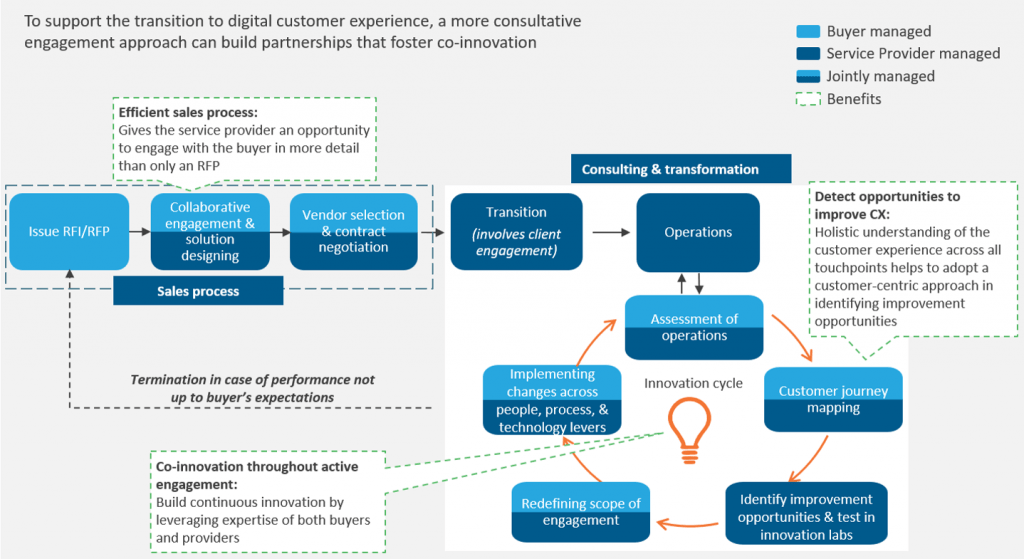CX and the Philippines: An Evolving Value Proposition | Sherpas in Blue Shirts
For the last several years, the Philippines’ value proposition as the leading contact center delivery location has been availability of a large workforce with good language skills and high empathy, at very competitive costs. But to remain the top contact center destination, it will need to evolve its value proposition from customer service delivery to CX delivery.
This is because CX has emerged as a top priority for firms to build a loyal customer base in today’s digital age in which end-consumers are seeking a seamless, quality, personalized experience across channels. To support clients in this quest to deliver a superior customer experience, the contact center industry is transforming from an arbitrage-first to experience-first model. Everest Group research shows that the key to delivering the CX of the future is optimizing a blend of talent and technology.
The primary technology enablers
- Fortify analytics solutions – Contact centers are blessed with access to a wealth of high-quality data. Customer analytics can help them provide personalized services and real-time support for query resolutions. Operational analytics will allow them to monitor processes, predict future demand, and optimize service elements to achieve the best outcomes.
- Embrace automation solutions – The first step is using self-service offerings to manage simple queries, followed by leveraging rule-based chatbots and smart IVRs to manage high-volume transactional tasks for maximum automation impact on contact center operations.
- Focus on delivering omni-channel experience – Delivering a consistent, seamless customer experience requires an integrated view of the customer across all channels. With a more case-driven approach, each interaction that the customer has with the organization feels like part of an ongoing conversation and relationship.
The key talent enablers
While technology advancement will help prepare the groundwork for CX delivery, talent enablers are equally important to ensure a smooth transition:
- Build the right talent strategy – As contact centers adopt technology on a wider scale, the role their agents play will evolve to focus more on domain and technology expertise. Thus, recruitment and training programs must align to identifying new talent with the right skills, and strengthening existing agent capabilities and knowledge.
- Rationalize KPIs/metrics – To measure agent performance, contact centers will have to establish metrics and KPIs that focus on digital enablement, business outcomes, and impact on the customer experience.
If you’re currently associated with a contact center in the Philippines, or are considering outsourcing contact center operations to the Philippines, we invite you to join us at the Contact Center Association of the Philippines’ annual conference at Shangri-la’s Boracay Resort & Spa, Boracay Island, Philippines on October 11 and 12. The Contact Islands conference, at which my colleagues Karthik H and Katrina Menzigian will be featured speakers, will focus on the evolving nature of CX, and how the Philippines is matching the pace of the global industry-wide disruption.

